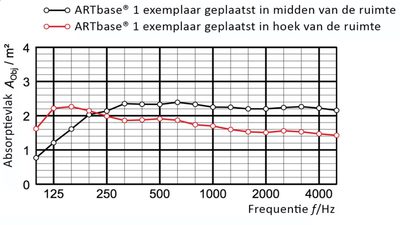How is our acoustics advice established?
If you experience problems with acoustics, in your home or workplace, it is wise to have an acoustics expert come by.
Every space is different in shape and size, but also in function and people in it. Each room therefore has its own acoustics. To be able to advise the right acoustic solution, a thorough investigation will first have to be done into the causes of the acoustic problems. But how does that work?
Frequently Asked Questions
- How are the acoustics in a room determined?
- Which room acoustic parameters are measured?
- What is reverberation time?
- What is Early Decay Time?
- What forms of sound transmission are there? What influence does the method of sound transmission have on the acoustics?
- What is an echo? What are flutter echoes?
- What is speech intelligibility?
- What does the bass ratio measure? What are low frequency sounds?
Would you like to know how you can improve the acoustics in your room(s)? Then make an appointment for an acoustic measurement.
Acoustic research, measurement, and advice
At Incatro we determine the acoustics in a room by means of an acoustic study.
After an initial inventory of the characteristics of the room and the problems that are experienced, we then do an acoustics measurement. Then you will receive extensive tailor-made acoustic advice.

Different room acoustic parameters of sound
There are several properties of sound (and its behavior) that are variable and measurable. We take a closer look at these properties during our acoustic research to see how the acoustics are in a certain room:
- Reverberation Time (T) and Early Decay Time (EDT)
- Sound transmission (direct and indirect radiation)
- Echo and flutter echo
- Speech intelligibility (STI and RASTI)
- Bass Ratio (BR)
Reverberation time
Reverberation time is the time during which a sound phenomenon can still be heard in a room when the sound source has already been switched off. It is the time it takes for the sound pressure level in a room to decrease by 60dB after the sound source has been switched off.
A longer reverberation time means that the sound lingers in the room longer and can result in poor speech intelligibility and an uncomfortable listening experience.
Early Decay Time
Early Decay Time, also known as early reverberation time, is said to better show how reverberation is experienced in a room.
Sound transmission
Sound reaches the receiver in different ways; directly and indirectly.
Direct radiation of sound refers to sound that is beamed directly from the source to the receiver.
Indirect radiation is about sound that the listener only receives after it has been reflected off a surface.
Echo and fluttercho
An echo is a reflection of sound hitting something. You will then hear the sound “double”.
A flutter echo occurs when sound reflects back and forth between 2 parallel, hard surfaces, such as a long corridor. This echo is accompanied by a pulse-shaped sound (a kind of ticking) that is annoying and disturbing.

Speech intelligibility (STI and RASTI)
To measure how well speech can be understood in a certain room, especially in situations where background noise is present, the speech intelligibility is examined.
STI stands for "Speech Transmission Index" and is a measure of speech intelligibility in a certain acoustic environment.
RASTI stands for Rapid Speed Transmission Index and is actually a simplified method of measuring speech intelligibility.

Customized acoustic advice
Incatro takes all these parameters into account in its research and measurements. Based on the results of these measurements, you will receive acoustic advice that exactly suits your specific space, people, and problems with noise.
Every space is different and deserves a personal approach and solution.
Would you like to know which acoustic solution is the best in your situation? Then we would be happy to provide you with a tailor-made advice.